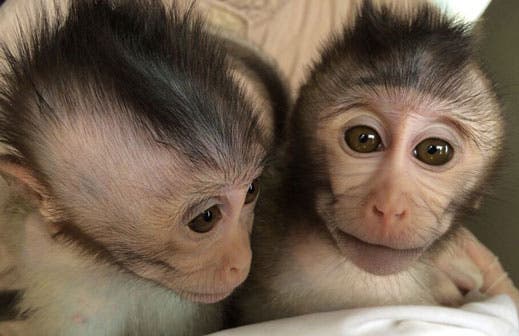Researchers in China have genetically engineered autistic monkeys which exhibit almost no social interaction. Now, they say they’ll try to cure it.

Image via MIT.
Autism is an umbrella term for conditions characterized by impaired social interaction and restricted and repetitive behavior. Controversy still surrounds autism, especially regarding the cause and mechanisms through which it manifests itself. Treatment is also a matter of debate, and is generally very expensive and often only partially successful. For someone born in 2000, a US study estimated an average lifetime cost of $4.07 million, with most biggest chunk being accounted by lost economic productivity. With that in mind, a team of medics believe they can better understand the condition by treating it on monkeys.
Neuroscientist Zilong Qiu of the Shanghai Institutes for Biological Sciences says his team has generated more than a dozen monkeys with a genetic error that causes them to exhibit autistic behavior. The same genetic error is associated with mental retardation and autistic features in humans.
“The monkeys show very similar behavior [to] human autism patients,” Qiu said during a conference call organized by Nature, the journal that published the report today. “We think it provides a very unique model.”
The monkeys are more easily stressed, they avoid eye contact and become nervous when eye contact is made and “grunt, coo, and scream” more often if challenged in this way, according to Qiu’s team – echoing the behaviors reported in humans.
Decades of studies on autism in mice have yielded very few leads and Qiu believes monkey studies could be the much needed clue. He says scientists would now be able to study what brain networks had been disrupted and try out treatments to see what works. They are also considering new genome-editing technologies, such as CRISPR, he says.
However, their plan has been met with skepticism by some other researchers.
“I think we need to be cautious calling this a model … it does not quite accomplish that,” says Huda Zoghbi, whose lab at the Baylor College of Medicine discovered in 1999 that damage to the MECP2 gene causes Rett syndrome, a form of autism affecting girls.
She went on to add that despite some symptoms being similar to those in humans, they are not identical, and some of the most important symptoms (like seizures) are absent.
“For the sake of the field and the families it is important that we study models that are constructed to genetically mimic what happens in humans and that reproduce features of the syndrome as closely as possible,” Zoghbi says. “It is important that we hold [these] standards to nonhuman primate models.”
The risk is that not only will these models not mimic the right scenario, but they could give us false information, giving misleading clues about two non-identical situations. John Spiro, deputy scientific director of the Simons Foundation Autism Research Initiative in New York, believes researchers will remain divided on this issue.
“There is a sentiment that you are never going to generate enough animals to be able to do the really important experiments,” he says. “But a lot of people feel extraordinary strongly that rodents aren’t good enough. I would say the smartest minds in the field say we have got to do this.”
I also feel that a matter of ethics should also be discussed here. Engineering autistic monkeys definitely sounds like a debatable idea.







